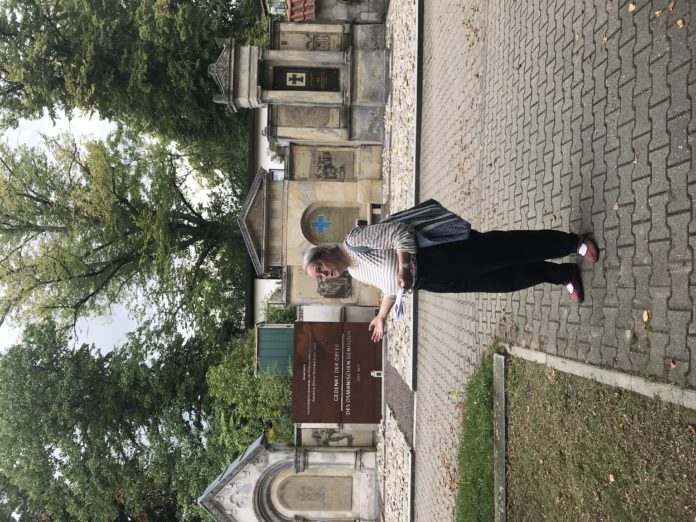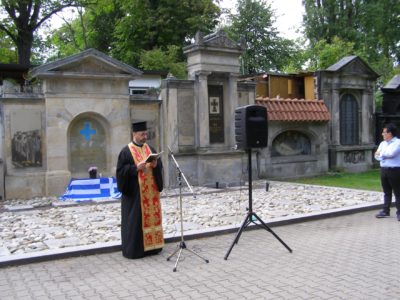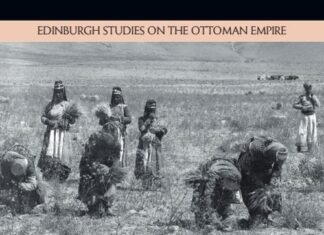BERLIN — Every year in mid-September, members and friends of the Greek Orthodox community in Berlin gather at the Luisenkirchhof III cemetery to honor the memory of the victims of the genocide. On September 11, the Day of the Open Monument, participants took part in a tour of the cemetery led by Dr. Tessa Hofmann, co-founder and spokeswoman of the organization behind the initiative (FÖGG). On Sunday, September 12, she delivered an address at the commemorative ceremony, where a wreath was laid, and Archimandrite Dr. Stefan L. Toma, of the Greek Orthodox Church of Christ’s Ascension, offered requiem prayers.
Among those who attend these events are Armenian as well as Aramaean/Assyrian/Chaldean Christians. The site is known as the Altars of Remembrance. A unique monument embodying the spirit of ecumenicism, it occupies a special place in Germany’s culture of remembrance, as the story of its origins reveals. Hofmann shared this history while guiding visitors through the cemetery.
At the beginning of the 20th century, an estimated five million indigenous Christians from these communities lived in what is today Turkey, and over three million perished on orders of the Ottoman regime, through deportations, massacres and slave labor.
When, in the second half of the 20th century, large numbers of Greeks and other Christians arrived in Germany from Turkey and countries of the Middle East, they were de facto refugees. Many of them were descendants of genocide survivors, and could be described as carrying little luggage but a heavy burden of memory. Most painful must have been the memory of those relatives denied proper burial, and whose final resting place, in modern day Syria, Turkey and northern Iraq, had become inaccessible.
Thus, their desire and need for sites of personal and community commemoration in their new homeland was great. Not only as a place for mourning, but also as a symbolic warning or admonition, never to allow a repetition of such crimes against humanity.
In 2002, the “Speaking with One Voice!” organizing committee was set up, a civil society group calling for recognition in the German Bundestag (Parliament) of the 1912-1922 genocide against Ottoman Christians. In 2008 it launched the initiative for an ecumenical remembrance site in Berlin and received support from local political figures in Charlottenburg, a district with a strong historical connection to Armenian-Turkish-German history. Two of Berlin’s Armenian communities as well as a Syrian Orthodox community are located here.










